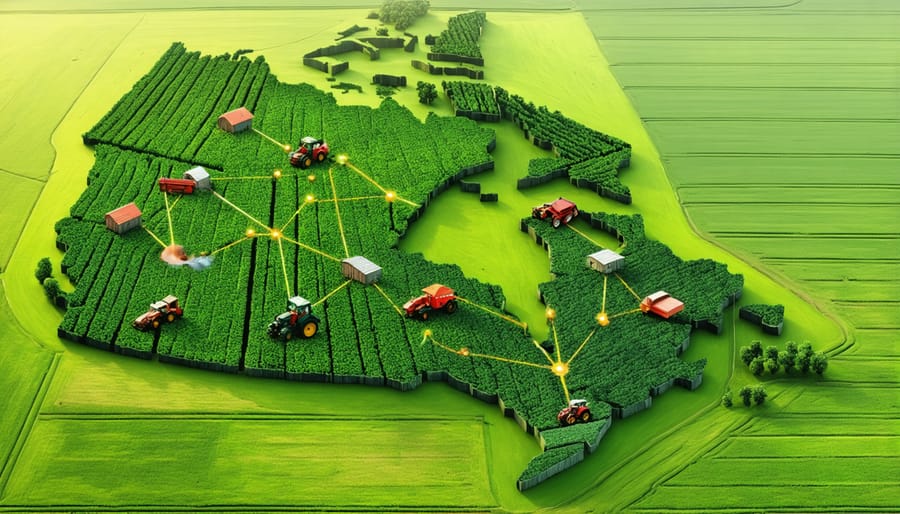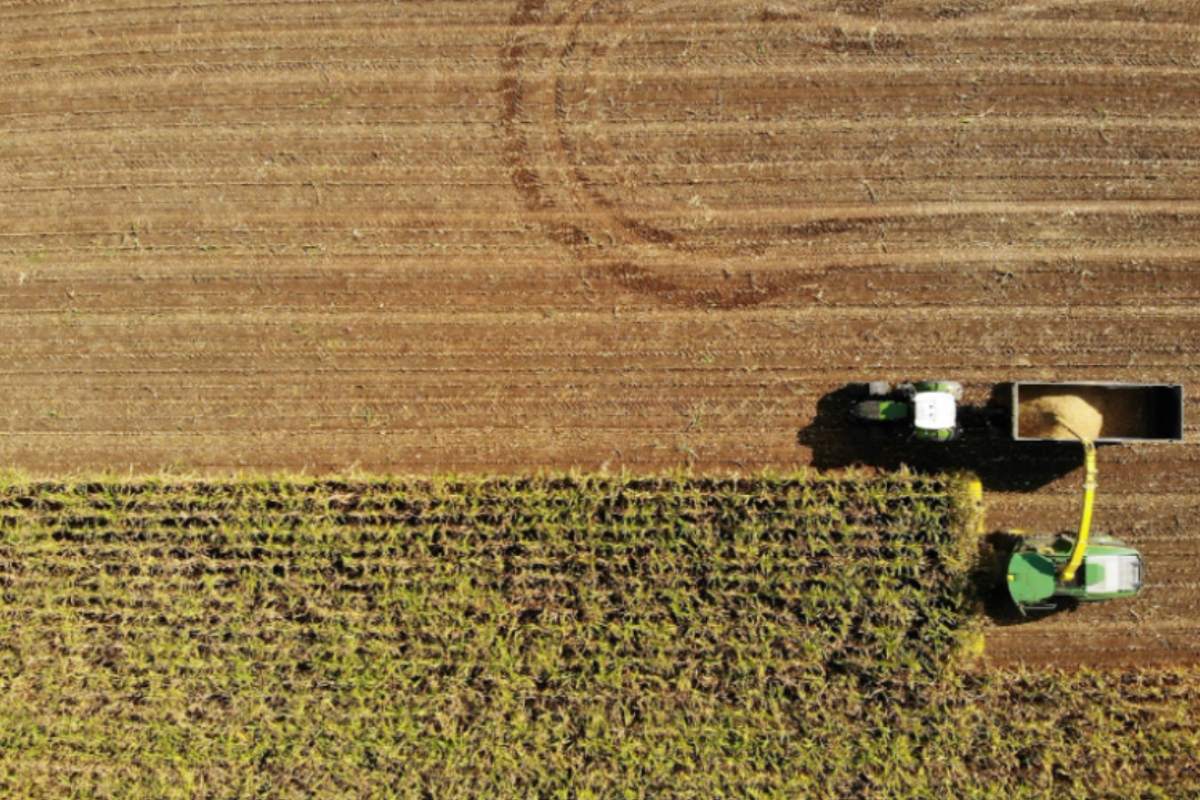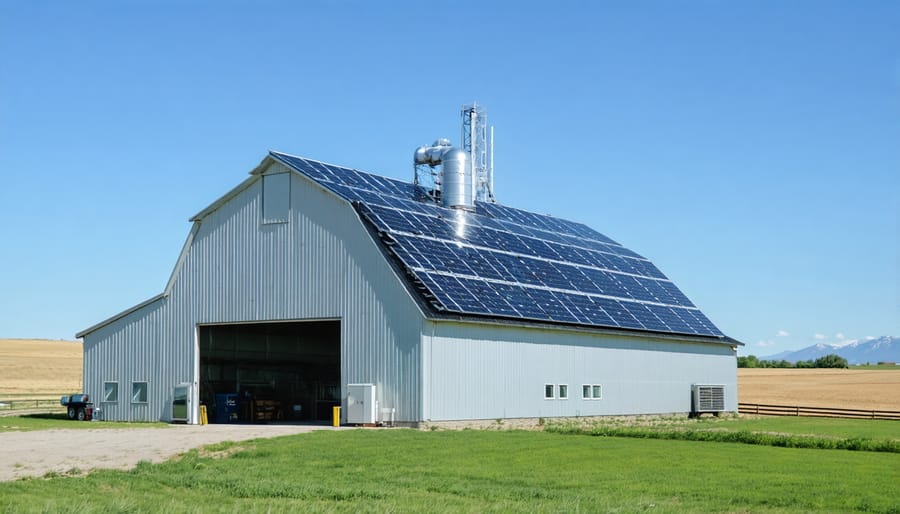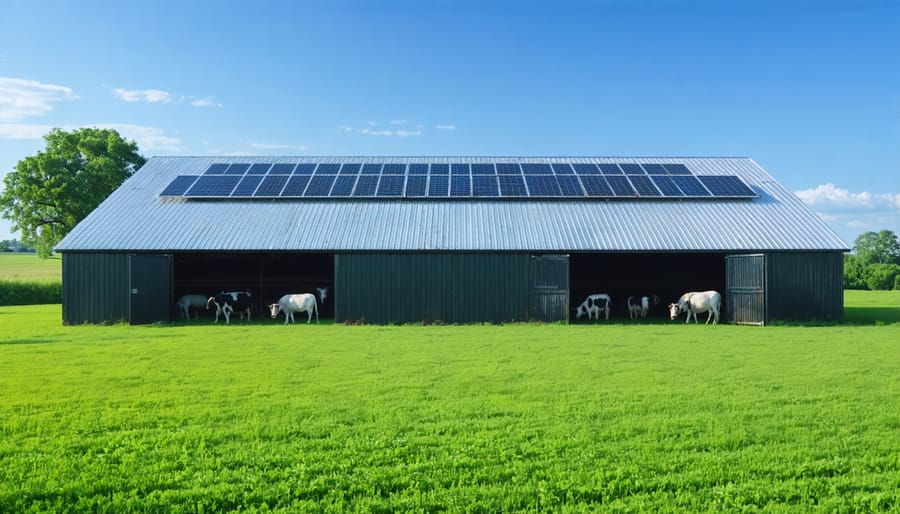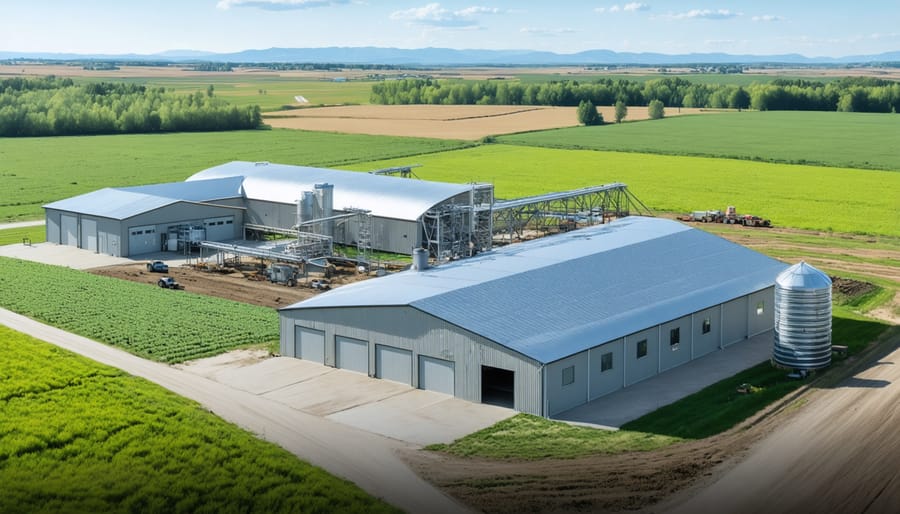Transform your farm into a renewable energy powerhouse while maintaining sustainable farming practices. Install solar panels on unused barn roofs and equipment storage buildings to generate up to 25kW of clean electricity per 160 square meters. Integrate smart micro-grid systems to power irrigation pumps, grain dryers, and cold storage facilities while selling excess energy back to Alberta’s power grid. Harness biomass from crop residues and livestock waste through anaerobic digestion, producing both renewable natural gas and nutrient-rich fertilizer. Convert traditional windbreaks into dual-purpose installations by mounting vertical axis wind turbines, generating consistent power while protecting crops from harsh prairie winds.
Today’s Canadian farmers stand at the intersection of agriculture and clean energy innovation, pioneering solutions that slash operating costs while building climate resilience. With Alberta’s abundant solar resources averaging 2,300 hours of sunshine annually and average wind speeds of 16-20 km/h in rural areas, agricultural operations are uniquely positioned to lead the renewable energy transition while maintaining food production capacity.
The Green Energy Revolution on Alberta Farms
Solar Power: From Fields to Energy Fields
Solar panels are becoming increasingly common across Alberta’s agricultural landscape, offering farmers a dual-purpose solution for land use. Modern solar installations can be strategically placed to allow continued crop production or grazing underneath, maximizing land efficiency while generating clean energy.
For example, the Thompson family farm near Lethbridge installed a 100-kilowatt system that powers their entire dairy operation while allowing sheep to graze beneath the elevated panels. The installation paid for itself within six years through reduced electricity costs and revenue from feeding excess power back into the grid.
Many Alberta farmers are taking advantage of provincial programs that offer grants covering up to 35% of solar installation costs. These systems are particularly effective in our province, which enjoys more than 2,300 hours of sunshine annually – among the highest in Canada.
Beyond energy generation, solar installations can provide additional benefits such as snow protection for winter crops and shade for heat-sensitive plants during summer months. Some farmers report improved soil moisture retention under panel arrays, leading to better yields in partially shaded areas.
Consider starting small with a pilot project powering essential operations like irrigation systems or barn lighting before scaling up based on results and needs.

Wind Energy: Harvesting More Than Crops
For Alberta farmers, wind energy presents a unique opportunity to diversify farm income while contributing to sustainable agriculture. Our province’s wind-swept prairies offer ideal conditions for small to medium-scale wind turbines, with many areas experiencing average wind speeds of 6-8 metres per second at hub height – perfect for energy generation.
Take the example of Dave Thompson’s farm near Pincher Creek, where three 80-kilowatt turbines not only power his entire operation but also generate surplus electricity that he sells back to the grid. “The initial investment was significant,” Dave shares, “but the turbines paid for themselves within six years, and now they’re pure profit.”
Modern agricultural wind systems can be tailored to farm size and energy needs. Single turbines can power irrigation systems and grain dryers, while larger installations can support entire farming operations. The Alberta Renewable Energy Cooperative reports that farmers participating in their wind energy program save an average of $12,000 annually on electricity costs.
Importantly, wind turbines have a minimal footprint, typically using less than 0.1 hectares per turbine, allowing crops or livestock to thrive right up to the base of the structure.
Smart Investment: The Economics of Farm-Based Renewable Energy
Government Incentives and Support Programs
Alberta farmers have access to numerous government incentives and support programs designed to facilitate the transition to renewable energy systems. The Canadian Agricultural Partnership (CAP) offers grants covering up to 50% of eligible costs for implementing solar panels, wind turbines, and biogas systems on agricultural operations. Through Alberta’s Energy Efficiency Agriculture Program, farmers can receive funding of up to $250,000 for projects that reduce energy consumption and greenhouse gas emissions.
The Solar for Agriculture Program specifically supports the installation of solar photovoltaic systems, providing rebates of $0.75 per watt installed, making it significantly more affordable for farmers to harness solar energy. Additionally, the Farm Energy and Agri-Processing Program offers cost-sharing opportunities for energy-efficient equipment upgrades and renewable energy installations.
Local agricultural societies and rural municipalities often provide supplementary funding and technical support. The Growing Forward 2 initiative continues to support innovative agricultural practices through various streams of funding, including environmental stewardship projects.
For new adopters, the Rural Energy Program offers free energy assessments and consulting services to help farmers identify the most suitable renewable energy solutions for their operations. These assessments can be invaluable in determining project feasibility and maximizing return on investment.
To access these programs, farmers can connect with their local agricultural fieldman or visit Alberta Agriculture and Forestry’s website for detailed application procedures and deadlines.

Return on Investment: Real Numbers from Real Farms
The numbers speak for themselves when it comes to renewable energy investments on Canadian farms. Take the Carter Family Farm in Lethbridge County, which installed a 100kW solar array in 2019. Within two years, they reduced their annual electricity costs by 85%, saving approximately $14,000 per year. Their initial investment of $120,000 was offset by $35,000 in provincial grants, putting them on track for full payback within six years.
In Red Deer County, the Morrison dairy operation invested in a biogas digester that converts manure into electricity. Their $450,000 system now generates enough power for their entire operation plus 30 nearby homes, creating an additional revenue stream of $40,000 annually through power grid sales.
Small-scale success stories are equally impressive. The Zhang family’s market garden near Edmonton installed a modest 10kW solar system for $15,000. After rebates, their net investment was $9,000, and they’re saving $2,100 yearly on energy costs. Their greenhouse operations now run entirely on solar power during peak growing seasons.
Wind energy is also proving its worth. The Cooperative Wind Farm Project in southern Alberta, involving six family farms, generates an average of $8,000 per turbine annually for each participating farm while maintaining regular agricultural operations underneath the turbines.
These real-world examples demonstrate that green energy investments can provide reliable returns while supporting sustainable farming practices.
Practical Implementation Strategies
Getting Started: Assessment and Planning
Before diving into renewable energy implementation, it’s crucial to assess your farm’s potential and develop a comprehensive plan. Start by conducting an energy audit of your current operations – this will help you identify areas of high energy consumption and potential opportunities for renewable solutions.
Consider tracking your energy usage patterns over different seasons, noting peak consumption periods during activities like irrigation, grain drying, or dairy operations. Many utility companies offer free or subsidized energy assessment services, and Alberta’s Agricultural Energy Efficiency Program provides resources for detailed evaluations.
Next, evaluate your farm’s natural resources. Document available space for solar panels, average wind speeds, water sources for potential micro-hydro systems, and biomass materials from crop residues. Local weather data and solar exposure maps can help determine which renewable technologies might work best for your location.
Financial planning is equally important. Create a detailed budget that includes initial installation costs, available grants and incentives, projected energy savings, and estimated payback periods. The Canadian Agricultural Partnership offers funding support for green energy initiatives, and many financial institutions now provide specialized loans for agricultural renewable energy projects.
Don’t forget to consult with neighbours who have already implemented renewable energy systems. Their experiences can provide valuable insights into practical challenges and solutions specific to our region. Local agricultural extension offices and renewable energy contractors can also help assess your farm’s specific needs and potential.
Remember to consider your long-term farm development plans. If you’re planning to expand operations or add new buildings, factor these into your renewable energy strategy. This forward-thinking approach ensures your green energy investments align with your farm’s future growth.
Integration with Existing Farm Operations
Integrating renewable energy systems into existing farm operations requires careful planning and a strategic approach to maintain optimal productivity. The key is to implement changes gradually while ensuring efficient resource management across all farming activities.
Start by conducting a comprehensive energy audit of your current operations. This helps identify peak usage times and areas where renewable systems can provide the most benefit. Many Alberta farmers have found success by beginning with smaller projects, such as solar-powered irrigation systems or wind turbines for grain drying operations, before scaling up to larger installations.
Consider your farm’s layout when positioning renewable energy infrastructure. Solar panels can be mounted on existing barn roofs or installed in less productive areas, while wind turbines should be placed where they won’t interfere with equipment movement or crop spraying patterns. Modern tracking systems allow solar panels to follow the sun’s path, maximizing energy generation while minimizing land use.
Integration timing is crucial. Schedule major installation work during off-peak farming periods to minimize disruption to regular operations. Many farmers in Southern Alberta have successfully completed solar installations during winter months when field work is minimal.
Maintain your existing power systems initially as backup while transitioning to renewable sources. This ensures continuous operation during the adjustment period and provides peace of mind during critical farming operations. Working with local agricultural extension services can help develop a customized integration plan that accounts for your farm’s unique needs and operational patterns.
Future-Proofing Your Farm
Emerging Technologies in Agricultural Energy
The agricultural energy landscape is rapidly evolving, with innovative technologies reshaping how Canadian farms harness and utilize renewable energy. Among the most promising developments are hybrid solar-wind systems specifically designed for Alberta’s diverse climate conditions. These systems integrate with smart farm technologies to optimize energy production and usage based on real-time weather patterns and farm operations.
Biogas capture systems are becoming more sophisticated, with new digesters that can process multiple types of agricultural waste simultaneously. These systems are particularly valuable for dairy and livestock operations, where manure management and energy production can be efficiently combined.
Advanced energy storage solutions are also emerging, with new battery technologies designed to withstand extreme temperature variations common in prairie regions. These systems are becoming more affordable and can store excess energy from both solar and wind sources, ensuring consistent power supply during peak usage periods.
Innovative microgrid systems are being developed specifically for farm applications, allowing multiple properties to share renewable energy resources and create resilient local power networks. These systems can integrate various renewable sources and provide backup power during grid outages, enhancing farm energy security.
Precision agriculture tools powered by renewable energy are becoming more common, including automated irrigation systems and climate-controlled greenhouses that operate entirely on clean energy, significantly reducing operational costs while maintaining productivity.
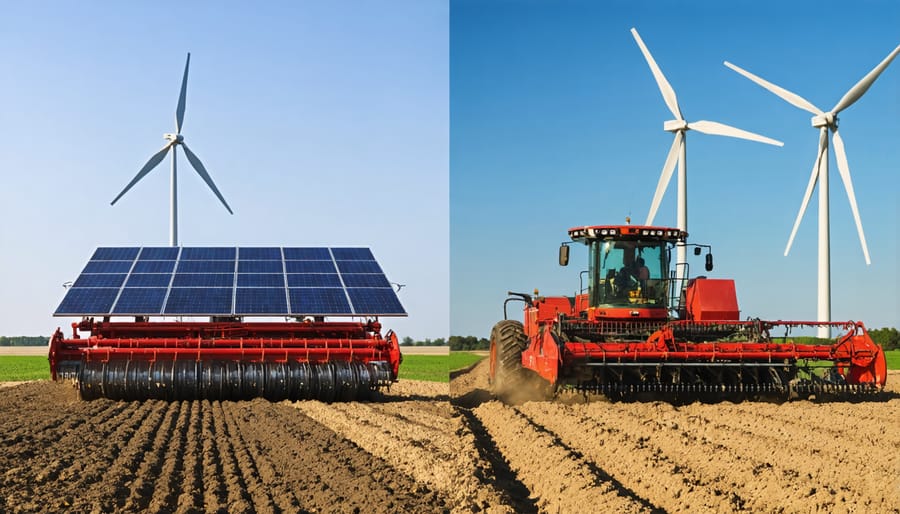
Building a Sustainable Legacy
By investing in green energy solutions today, farmers are creating a lasting legacy that benefits both the environment and future generations of agricultural producers. The transition to renewable energy not only reduces our carbon footprint but also establishes a foundation for climate resilience that will serve farming communities for decades to come.
The long-term economic advantages are substantial. Solar panels and wind turbines typically have lifespans of 25-30 years, providing reliable energy generation well beyond their initial payback period. Many Alberta farmers who installed renewable systems in the past decade are now experiencing near-zero energy costs, allowing them to reinvest savings into farm improvements and succession planning.
Environmental benefits compound over time. Each year of renewable energy use prevents thousands of kilograms of greenhouse gas emissions, improves local air quality, and reduces pressure on natural resources. These improvements create healthier ecosystems that support sustainable farming practices for future generations.
Moreover, farms utilizing green energy often become educational hubs, inspiring neighbouring operations and young farmers to embrace sustainable practices. This ripple effect strengthens community resilience and positions Canadian agriculture as a leader in environmental stewardship. By embracing renewable energy today, we’re not just powering our farms – we’re cultivating a sustainable future for Canadian agriculture.
As we’ve explored throughout this article, the integration of green energy in agriculture presents tremendous opportunities for Canadian farmers to enhance their operations while contributing to environmental sustainability. From solar-powered irrigation systems to biomass solutions, the options available to Alberta’s agricultural community are both diverse and increasingly accessible.
The success stories we’ve shared from local farmers demonstrate that the transition to renewable energy isn’t just environmentally responsible – it’s economically sound. With available grants, tax incentives, and the long-term savings on energy costs, the initial investment in green technology can pay dividends for generations to come.
Remember, you don’t have to transform your entire operation overnight. Start with small, manageable steps like conducting an energy audit or installing LED lighting systems. Connect with local agricultural extension services and fellow farmers who have already begun their renewable energy journey. Their experiences and insights can prove invaluable as you plan your own transition.
The future of Canadian agriculture is intrinsically linked to sustainable practices, and green energy adoption is a crucial part of that future. By embracing these technologies today, you’re not only securing the long-term viability of your farm but also contributing to Canada’s leadership in sustainable agriculture.
Take that first step today. Reach out to local renewable energy consultants, connect with agricultural associations, and explore the funding options available in your region. Together, we can build a more sustainable and prosperous future for Canadian agriculture.


